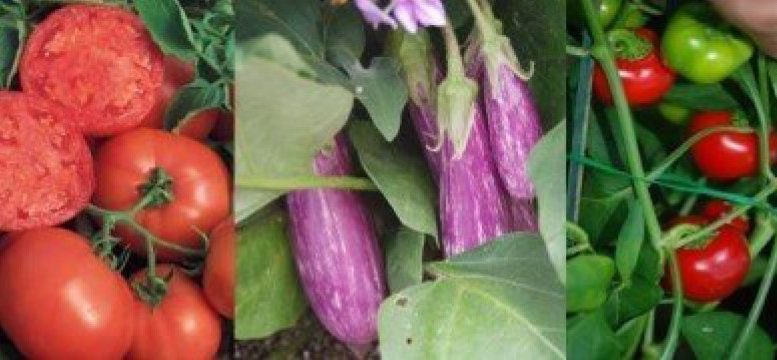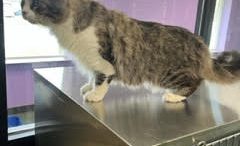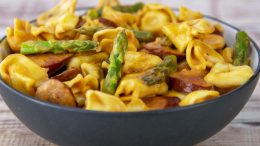Tomatoes are probably the #1 container vegetable that interests gardeners after herbs.
Based on our trial programs in 2008 and 2009, there are some excellent varieties that are easy to find in seed catalogs and garden centers to get you started in producing great flavored tomatoes. This fact sheet, coupled with the advice in “Growing Great Container Vegetables #1: General Recommendations”, should get you on the path to success.
Unlike more standard garden varieties, you may have to hunt around for a greenhouse that grows these varieties or start the plants yourself. Look for varieties that are labeled “compact” or “for containers”. Larger garden varieties, even those considered determinate will simply get too tall for a container and require excessive support. In our trials, we looked for varieties that required little to no trellising.
Unfortunately, only a few varieties have required no support.
Specific advice for tomatoes in containers
Use at least a 14″ pot, larger is better. We’ve used up to 20″ pots and the plants responded by getting larger and producing more fruit. Larger pots also hold more root mass and water which helps a lot as the days get hot and plants grow large with large water demands.
Use only compact, container varieties. There aren’t a lot of them, but more are in the breeding pipeline as the 2010 program has many more varieties than were available in 2009. See the variety list at the end for our comments and recommendations.
Use only potting media (soil) that is labeled for larger pots. Our trial mixes contained substantial composted pine bark blended with peat moss and perlite. Other mixes use coir, peanut shells, and rice hulls for similar bulking purposes. Mixes that are high in peat moss will compress too much during the growing season thus reducing root mass. Without this mass, the plants will be unable to develop properly and hold enough water to get through the day.
Container tomatoes benefit from upright support. Since container varieties tend to be shorter, conical wire trellis with 2 rings has been sufficient (these are readily found in garden centers). Be sure to install these in the container shortly after planting or you are likely to damage the plants by installing them once they are really needed. Some of the smaller cherry-type tomatoes are so small that no support is required.
Good tomatoes require a lot of nutrients. Most potting media comes with about a two-week fertilizer charge, then the plants need to be fed or growth starts to slow down. Start by applying a timed-release, pelleted, fertilizer following the label directions for rate based on pot size. At about 2 weeks after planting, begin watering weekly with a soluble fertilizer. Until the plants begin flowering, you can use a balanced fertilizer with a 1-1-1 ratio such as 20-20-20. Once flowering, change over to a high potassium fertilizer. Most fertilizers blended for tomatoes fit this description. In our program, we’ve been using a fertilizer with a 9-15-30 plus micronutrients analysis. Organic growers can use a combination of fish emulsion, green sand, kelp meal and bone meal to get similar results. Be sure to increase feeding as the plants grow larger. Apply more timed-release fertilizer after 10-12 weeks. There is good research to support the inclusion of seaweed-based supplements even with a strong conventional fertilizer program.
While insects are seldom a big problem on tomatoes, diseases are common due to our generally humid summers. Septoria leaf spot occurs on all tomatoes and requires attention or it will defoliate the plants just as the fruit is really coming on. This disease is very easy to diagnose, it starts as scattered speckles or lesions on the lowest leaves. Then the speckles become larger and more numerous and spread upward eventually leaving dead leaves behind. Without those leaves, the plant cannot produce sugars and the other compounds that go into creating flavorful fruit. Eventually, Septoria leaf spot will kill the plant outright. From the first flower buds, apply either Chlorthalonil (Daconil and Fungonil in garden centers) or copper solutions weekly. If the weather is dry, you can reduce fungicide applications to every 2 weeks.
Note: we are testing a range of biological fungicides on tomato diseases in 2010 and 2011 and hope to be able to add biological options for effective disease control based on that research.
Harvest your tomatoes as they ripen completely. This timely harvest allows the plant to move resources to other fruit. Never leave rotten or overripe fruit on the plant as they will degrade other fruit. For the best-flavored fruit, leave them on the vine until fully colored. At the first sign of frost, harvest any fruit that looks even somewhat ripe, then toss the plant or cover the plant with row cover during cool periods. The row cover will increase the heat and protect the plants from frost until it gets below 25F.
Variety Comments
Bush Early Girl
One truly excellent variety. We had sufficient quantities off of 3 plants to include this one in our tasting program and our panel loved it. It had real tomato taste, good size for slicing and good yields. While relatively compact, the plants really need to be supported as the fruit load gets heavy enough to break branches.
Patio Princess
Good flavor in a saladette-sized fruit. Excellent yields for a compact plant and the fruit kept coming over a long period. Even though the fruit are small, this variety benefits from support.
Window Box Roma
Large quantities of paste-type tomatoes. Although not a lot of flavor, they were judged acceptable and fit a 14″ container. These did not require support.
Bushsteak
While it took a long time to get any ripe fruit from Bushsteak, the fruit were large and meaty with a fully balanced tomato flavor. The yields were good, but after waiting so long, all the fruit ripened and were gone after 2-3 weeks. This variety may benefit from the use of row covers early in the season to promote faster growth. Must be supported.
Super Bush Hybrid
The earliest yielding of the slicing container tomatoes in the trial. We started picking Super Bush right along with Bush Early Girl. Good flavor and good yields in a medium-sized slicer. Must be supported.
Tumbler
Very small plants with minimal flavor. You can plant as many as 3 plants in a 14″ pot. No support required. We are planning on increasing the potassium to this variety in 2010 in an effort to improve the flavor.
Prepared by Steve Bogash, retired extension educator. The evaluation of these vegetables is largely due to the labor of the Penn State Extension, Franklin County Master Gardeners, and the staff of the Penn State Southeast Research and Extension Center. Of special note is the work of Hillary Snavely, Summer Horticulture Intern 2009, and Donna Berard, Franklin County Master Gardener.
This educational blog is a series of informative articles from the Penn State Master Gardeners volunteers plus news concerning the group and their activities. For more information, click here.











































